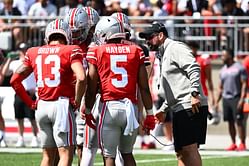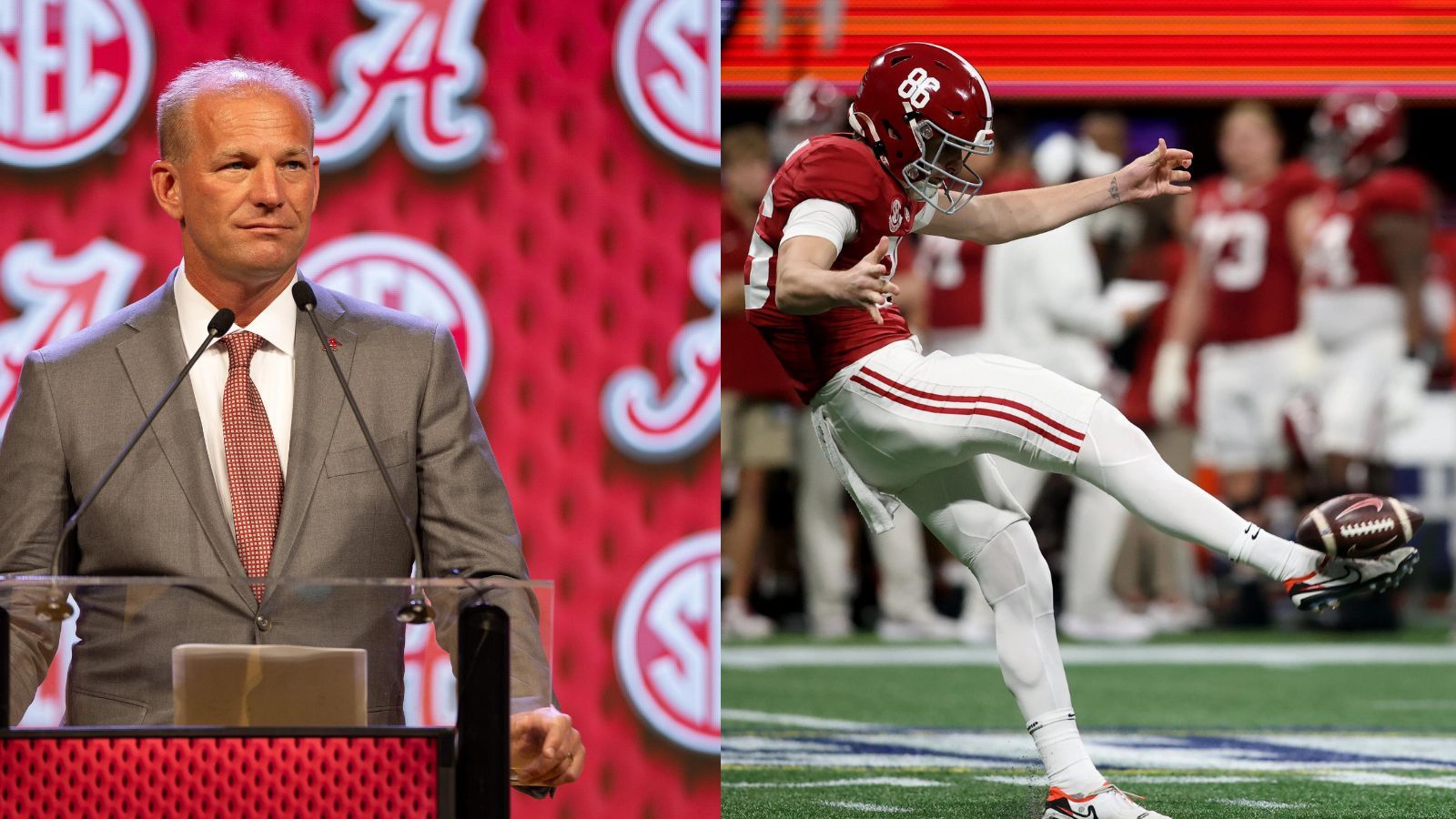In evaluating and comparing the recruiting efforts made by college football programs each year, we turn to "College Football Recruiting Team Rankings." These ratings assess not only the quantity but also the caliber of recruits obtained by each team; evaluating factors such as their rating by recruitment services as well as depth and overall talent displayed among all recruits selected.
These system-generated evaluations are developed using inputs from sources like sports media outlets or expert recruiters who closely follow college football recruitment trends.
The resulting ranking tables provide insights into how effectively each institution attracts top talents from both high schools and junior colleges within their recruitment zones.
Fans, coaches, and analysts alike pay rapt attention to these yearly rankings because they offer a hint into future potentials for prospecting teams' rosters while considering that ranking lists can vary slightly depending on source subjectivity.
However remarkable outlines delivered through high-ranking recruitments do not necessarily guarantee victories on the field; thus making such validations subjective in nature. Apart from coaching techniques, player development initiatives, and group synergies that all contribute significantly to a team's overall performance; there is also great relevance in assessing a program’s recruitment efforts. The "College Football Recruiting Team Rankings" offer an instructive guide for enthusiasts and analysts who want to measure a school's recruiting achievement and potential foothold on the college football scene.
College Football Recruiting Team Ranking Introduction
Through comprehensive evaluations of college football programs all over the country, the College Football Recruiting Team Rankings determine each program's ability to attract top talent from high schools or junior colleges. These evaluations consider numerous factors such as quality versus quantity of recruits within a particular class along with its overall depth and potential talent levels. Compiled by sports media outlets along with other industry experts including popular recruiting services, these rankings generate fervent anticipation as well as subsequent discussions among coaches, fans or analysts seeking valuable insights into future potential. Despite some subjectivity involved in ranking criteria and no guaranteed measure for on-field success relative to program rankings, useful benchmarks do arise through collective evaluation. Thus, the College Football Recruiting Team Rankings remain important tools in evaluating each program's recruitment prowess while potentially affecting collegiate football's competitive environment.
Types of Recruiting
When it comes to recruiting players for college football there are a variety of methods that coaches and programs use to identify and secure top talent. Here are some of the ways and methods which are followed:
High School Recruiting: This is the most traditional way of recruiting, where college football programs scout potential players directly from high schools.
Coaches and scouts attend games assess players' skills and potential and develop relationships with athletes and coaches to gauge their interest in joining their team. 2. Junior College Recruiting: Junior colleges (JUCOs) offer athletes the chance to continue playing football while improving their skills before transferring to four-year universities.
College football programs often recruit JUCO players to fill specific needs or add experienced players to their rosters. JUCO recruits can have an immediate impact on a team's success. 3.
Transfer Recruiting: Along with high school and junior college recruits, college football programs also focus on recruiting players looking to transfer from one institution to another. Overall these methods allow coaches to build strong teams with diverse skill sets that can lead them to victory on the field. College coaches seek out transfer athletes from other four-year universities or junior colleges when searching for talented players.
To determine if someone is compatible with their program and can bring value on the field, coaches evaluate each candidate's performance and offer them opportunities to continue playing at another institution. For gifted athletes without an athletic scholarship but with exceptional talents that could benefit a program, preferred walk-ons provide an alternative route into college football programs.
After impressing through practice sessions they may eventually receive financial assistance beyond what was initially offered without scholarships. Before the senior year comes around early commitments occur when high-performing high school students vocalize their desire to play for a particular university first. Although not binding until National Letters of Intent (NLI) are signed later on during that year these commitments can showcase a student athlete's potential to coaches.
Distinguished talents catch the attention of college football programs that tag them as preferred targets. With their high potential and coveted skill set these athletes receive extensive scrutiny and recruitment attention from coaches throughout the country.
Recruiting top athletes is a crucial task for coaches in college football. They employ various tactics to try and secure the commitment of these players. The approach taken by each program for identifying and recruiting talented individuals varies, as they have their own unique strategies for building successful teams.
How to do “College Football Recruiting Team Rankings”
College football programs' recruiting efforts are evaluated based on several key factors. One such factor is how well-rounded and balanced the incoming class is overall.
Recruiting players across various positions while addressing specific needs tends to garner higher marks from evaluators.
Another critical consideration is evaluating the individual quality and potential impact of each recruit in a given class.
Higher-rated recruits typically carry more weight in overall rankings since they're viewed as having greater immediate potential for contributing significantly towards their teams' overall success.
Top recruits in college football
The success of college football programs can largely be attributed to their recruiting prowess. They attract top-notch talent from high schools across America by offering athletic scholarships thus ensuring competitiveness during games. Under this system some programs have consistently stood out - Alabama, Ohio State University (OSU) Clemson University (CU) Georgia Institute of Technology(GIT)and Louisiana StateUniversity(LSU) are amongst them.
It's worth noting that comparing each college football program's recruiting success throughout history can be quite a challenge; factors such as changing standards over time and ranking methodology make it somewhat subjective. Nevertheless, certain programs have consistently attracted highly sought-after prospects through the years: University of Alabama (UA) OSU, University of Southern California(USC) UniversityofTexas(UoT)andUniversityofFlorida(UoF)
Nick Saban's exceptional recruitment efforts have propelled UA to the top rung in recent years. Other praiseworthy recruitment efforts were made by OSU. These institutions' established football tradition has added to their already strong recruitment records enabling them to attract elite talents year after year.
The rich soil of California has provided USC with abundant talent year after year resulting in an impressive track record for attracting high-caliber recruits to bolster their already successful program. However, not to be outdone - Universities like the University of Texas and the University of Florida have continued to thrive in recruitment by tapping into traditional advantages while nurturing well-resourced programs that cultivate winning cultures conducive to top-level play.
List of College Football Recruiting Teams
In 2023, Alabama had the highest average rating and highest number of five-star recruits with 12. Today we look at the top 10 colleges with highest points and recruits:
| Rank | Team | Total | 5-Star | 4-Star | 3-Star | Avg | Points |
| 1 | Alabama | 28 Commits | 12 | 15 | 1 | 94.78 | 327.65 |
| 2 | Georgia | 26 Commits | 7 | 15 | 4 | 94.06 | 315.68 |
| 3 | Texas | 25 Commits | 6 | 12 | 7 | 92.96 | 306.32 |
| 4 | Oklahoma | 27 Commits | 3 | 14 | 9 | 91.47 | 289.03 |
| 5 | Ohio State | 20 Commits | 5 | 14 | 1 | 93.62 | 288.99 |
| 6 | LSU | 25 Commits | 3 | 15 | 7 | 92.18 | 288.43 |
| 7 | Miami | 23 Commits | 3 | 13 | 7 | 91.95 | 283.93 |
| 8 | USC | 22 Commits | 4 | 9 | 9 | 91.68 | 280.47 |
| 9 | Oregon | 29 Commits | 2 | 18 | 9 | 90.89 | 278.38 |
| 10 | Tennessee | 26 Commits | 2 | 12 | 12 | 90.66 | 277.35 |
FAQs
How do college football programs find recruits?
College football programs use various methods to find recruits. They attend high school games, and scouting events, and combine to identify talented players. They also receive recommendations from high school coaches, evaluate game footage and highlight reels, and monitor recruiting databases and rankings. Additionally, camps and showcases provide opportunities for coaches to evaluate players in person.
College football programs use various methods to find recruits. They attend high school games, and scouting events, and combine to identify talented players. They also receive recommendations from high school coaches, evaluate game footage and highlight reels, and monitor recruiting databases and rankings. Additionally, camps and showcases provide opportunities for coaches to evaluate players in person.
What is a National Letter of Intent (NLI)?
A National Letter of Intent (NLI) is a binding agreement between a recruit and a college or university. It signifies the recruit's commitment to attend that particular institution. Once signed, it prevents other schools from actively recruiting that player. NLIs are typically signed during designated signing periods
A National Letter of Intent (NLI) is a binding agreement between a recruit and a college or university. It signifies the recruit's commitment to attend that particular institution. Once signed, it prevents other schools from actively recruiting that player. NLIs are typically signed during designated signing periods
What are verbal commitments in college football recruiting?
A verbal commitment is a non-binding agreement between a recruit and a college football program. When a recruit verbally commits, they express their intention to join that program, but it is not a legally binding commitment. Verbal commitments can change before the recruit signs the NLI.
A verbal commitment is a non-binding agreement between a recruit and a college football program. When a recruit verbally commits, they express their intention to join that program, but it is not a legally binding commitment. Verbal commitments can change before the recruit signs the NLI.
What are recruiting rankings and how are they determined?
Recruiting rankings are assessments of the quality and success of a college football program's recruiting class. They are compiled by various recruiting services, media outlets, and experts. Rankings consider factors such as the number and ratings of recruits, class depth, and specific needs addressed. Different services may use different methodologies and criteria to determine their rankings.
Recruiting rankings are assessments of the quality and success of a college football program's recruiting class. They are compiled by various recruiting services, media outlets, and experts. Rankings consider factors such as the number and ratings of recruits, class depth, and specific needs addressed. Different services may use different methodologies and criteria to determine their rankings.
Can recruiting rankings predict on-field success?
While highly ranked recruiting classes often correlate with future success, on-field performance depends on various factors, including coaching, player development, team chemistry, and other external factors. Recruiting rankings are not foolproof indicators of future success but provide insight into the potential talent and impact of a recruiting class.
While highly ranked recruiting classes often correlate with future success, on-field performance depends on various factors, including coaching, player development, team chemistry, and other external factors. Recruiting rankings are not foolproof indicators of future success but provide insight into the potential talent and impact of a recruiting class.
Can recruits receive athletic scholarships?
Yes, recruits can receive athletic scholarships from college football programs. Athletic scholarships provide financial assistance to cover tuition, room, board, and other related expenses. The number of scholarships available to each program is regulated by NCAA rules.
Yes, recruits can receive athletic scholarships from college football programs. Athletic scholarships provide financial assistance to cover tuition, room, board, and other related expenses. The number of scholarships available to each program is regulated by NCAA rules.









